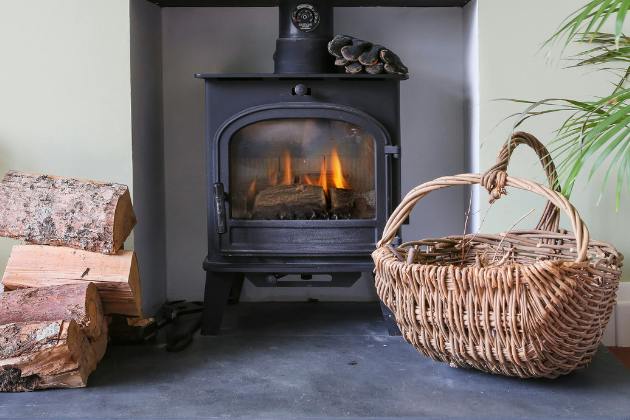Log burners, often known as wood-burning stoves, provide excellent heat while also adding a rustic character to any area. They are an environmentally friendly alternative to typical heating methods and can help you save money on your heating bills. Let's go into the world of log burners and learn how to choose, install, and maintain one.
Our Guide For Log Burners
Choosing the Right Log Burner
When selecting a log burner, several factors come into play:
Size and Heat Output
The size of your log burner should match the room you intend to heat. Consider its heat output in kilowatts (kW) – a higher output is suitable for larger spaces.
Fuel Type
Log burners can run on wood, multi-fuel, or pellets. Choose the fuel type that's most convenient for you and readily available in your area.
Design and Style
Log burners come in various designs, from traditional to modern. Select one that complements your home's decor.
Efficiency and Emissions
Look for models with high-efficiency ratings and low emissions to minimize environmental impact and save on fuel costs.

Installation Process
Installing a log burner requires careful planning and adherence to safety regulations. Here's what you should know:
Professional Installation
It's crucial to hire a qualified professional for installation to ensure safety and compliance with local regulations.
Ventilation and Clearances
Proper ventilation and clearances are essential to prevent overheating and fire hazards. Follow manufacturer guidelines and local codes.
Chimney Requirements
Ensure your chimney is suitable for a log burner. It may need lining or alterations for optimal performance.
Carbon Monoxide Detector
Install a carbon monoxide detector in the room to alert you to any potential leaks, ensuring your safety.
Maintenance and Care
To keep your log burner operating efficiently and safely, follow these maintenance tips:
Regular Cleaning
Clean the stove's interior, chimney, and flue regularly to prevent the buildup of creosote and other debris.
Annual Inspection
Schedule an annual inspection by a certified technician to check for any issues and perform necessary maintenance.
Fuel Quality
Use seasoned, dry wood for the best combustion and heat output. Avoid treated or painted wood.
Safety Measures
Keep a fire extinguisher nearby, and use a heat-resistant glove and tools when handling the stove.
Advantages of Log Burners
Cost-Effective Heating
One of the most compelling advantages of log burners is their cost-effectiveness. These stoves use wood as a fuel source, which is readily available and often cheaper than other heating fuels. By opting for a log burner, homeowners can significantly reduce their heating bills, making it an economically savvy choice.
Energy Efficiency
Log burners are renowned for their exceptional energy efficiency. They convert a high percentage of the wood's energy into heat, ensuring that very little goes to waste. This means you can enjoy a warm and cosy home while minimizing your environmental footprint.
Eco-Friendly Heating
In an era where environmental concerns are paramount, log burners offer an eco-friendly heating solution. Wood is a renewable resource, and when burned responsibly, it releases minimal greenhouse gases. Moreover, modern log burners are designed with advanced combustion technology that reduces emissions, making them a greener choice.
Ambience and Aesthetics
Apart from their practical benefits, log burners add a touch of ambience and aesthetics to your living space. The mesmerizing flames and the comforting crackling sound of burning wood create a great atmosphere that electric heaters or furnaces simply cannot replicate.
Contact Us for Log Burner Installation
For individualised consultations and quotations, get in touch with Home Heating Solutions. Call 01922 662840 or 07950 062 756, or send us an email at homeheatingwalsall@gmail.com to get in contact with us and we'll be happy to help.



